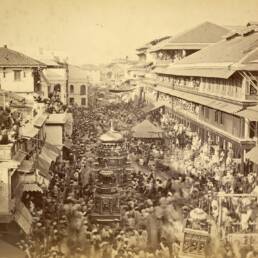Delhi and a goal net
- History
- Culture
- Music
The Liverpudlian who invented the goal nets was the same man who left his mark designing Lutyens’ New Delhi.
John Alexander Brodie, born in Bridgnorth in 1858, was a prolific civil engineer best known for his contribution to Liverpool town planning and building the iconic Mersey Tunnel beneath the River Mersey.
However, his most popular invention has a fascinating story. On 26 October 1889, Everton was playing Accrington in Anfield when a goal was disallowed although the Everton fans were convinced they had scored.
This led to a near-riot situation in a closely fought game that ended in a 2-2 draw. Among the crowd was young John Alexander Brodie who was inspired to devise a solution to avoid such controversies.
He came up with the brilliant idea of attaching a net to the goalposts to hold the ball and in November 1889, he submitted a patent application (no. 19,112) for goal nets in football and other games.
This was indeed a historic moment. The idea was so successful that the Football Association soon made its use compulsory. And thus the humble goal-net was born.
Brodie’s glorious portfolio wasn’t restricted to the UK. He was also instrumental in designing New Delhi, one of the major urban planning projects of the 20th century, as the Emperor of India decided to shift the capital of the Raj from Calcutta in 1911.
In 1912, he became a member of a group of esteemed engineers commissioned by the Indian government to design plans for New Delhi. This included several trips to India, where he partnered with Edwin Lutyens, the great British architect.
Sir Edwin Lutyens, whose name may have been tarnished these days due to political motivations, was a renowned architect who prepared the master plan for New Delhi in 1912-13 along with Sir Herbert Baker.
While Edwin Lutyens is the most well-known figure linked with the project, it has been largely forgotten now that John Brodie was also invited and had joined the advisory group.
New Delhi was the first modern capital city developed from the ground up with intricate service infrastructure. It was a top-priority engineering job.
And there was no one better qualified than Brodie to assist Lutyens in this iconic project. Indeed Broadie became such a respected figure that he was even consulted in the selection of fellow committee members.
Due to the high regard that Edwin Lutyens, the chief planner, held for him, Broadie visited India twice and was invited to the official inauguration ceremony in 1931 by the Viceroy.
Today, no one in India remembers the name of John Alexander Brodie, but every time we see a screamer that hit the goal net, it is an acknowledgement of the master innovator and civil planner.
Source: Athletic News/playupliverpool.com, wikimedia, punditarena.com, sportinglandmarks.co.uk, Oxford dictionary of National Biography BITList.







